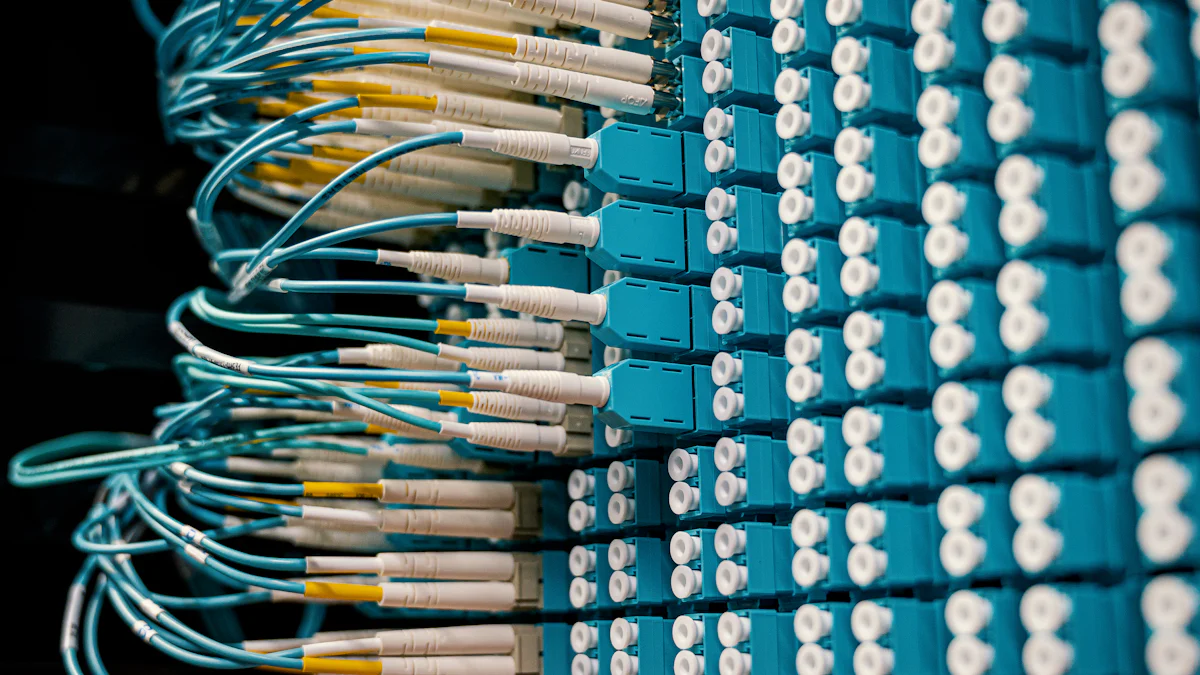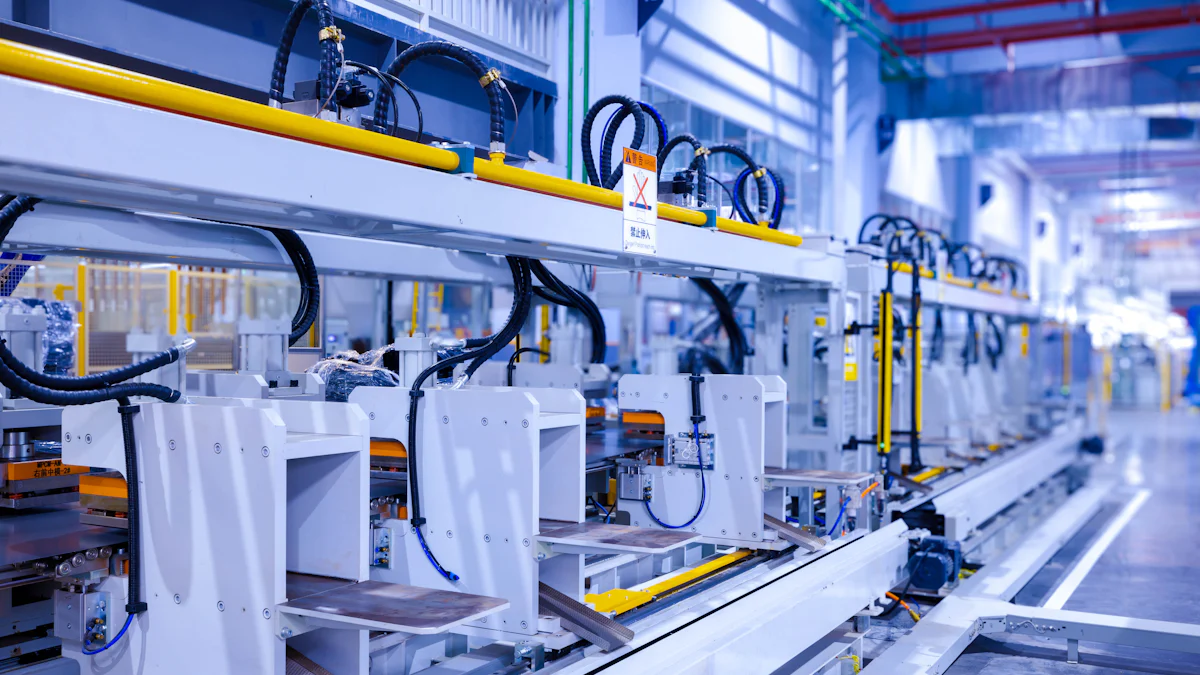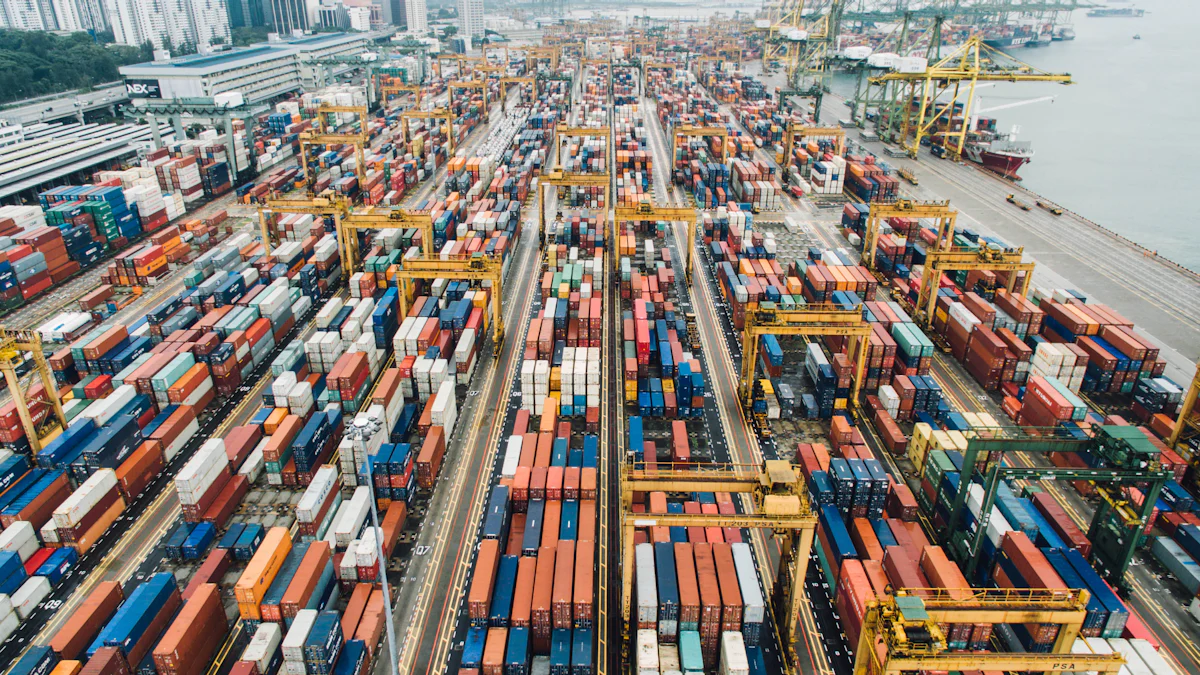How AI and Robotics are Shaping the Smart Supply Chain of 2030

The current state of supply chains faces numerous challenges, including inefficiencies and disruptions. Technology plays a crucial role in modernizing supply chains, enhancing their efficiency and resilience. AI Robotics emerges as a transformative force, revolutionizing various aspects of supply chain management. These technologies enable predictive analytics, dynamic ETA predictions, and intelligent hardware integration, significantly improving operational processes and decision-making capabilities.
The Role of AI in the Smart Supply Chain

AI in Demand Forecasting
Predictive Analytics
AI-driven predictive analytics revolutionizes demand forecasting. Companies leverage AI to analyze vast datasets, identifying patterns and trends. This analysis enables more accurate predictions of future demand. For example, AI models can forecast sales trends, helping businesses optimize inventory levels and reduce stockouts or overstock situations. The use of predictive analytics in demand forecasting enhances decision-making and operational efficiency.
Machine Learning Algorithms
Machine learning algorithms play a crucial role in refining demand forecasts. These algorithms continuously learn from historical data, improving their accuracy over time. By incorporating various factors such as seasonality, market trends, and consumer behavior, machine learning models provide dynamic and precise demand forecasts. This capability allows companies to adjust their production and procurement strategies proactively, minimizing waste and maximizing profitability.
AI in Inventory Management
Real-time Tracking
AI enhances inventory management through real-time tracking. Advanced AI systems monitor inventory levels continuously, providing up-to-date information on stock availability. This real-time visibility helps businesses respond swiftly to changes in demand, ensuring optimal stock levels. Real-time tracking also reduces the risk of stockouts and excess inventory, leading to cost savings and improved customer satisfaction.
Automated Replenishment
Automated replenishment powered by AI streamlines inventory management processes. AI systems analyze sales data, inventory levels, and lead times to determine the optimal time for reordering products. This automation eliminates manual intervention, reducing human error and enhancing efficiency. Automated replenishment ensures that inventory levels remain balanced, preventing disruptions in the supply chain and maintaining smooth operations.
AI in Logistics and Transportation
Route Optimization
AI algorithms optimize transportation routes, enhancing logistics efficiency. By analyzing traffic patterns, weather conditions, and delivery schedules, AI systems identify the most efficient routes for shipments. This optimization reduces delivery times and transportation costs. Efficient routing also minimizes fuel consumption, contributing to sustainability efforts. Companies benefit from faster deliveries and improved customer service through AI-driven route optimization.
Autonomous Vehicles
Autonomous vehicles represent a significant advancement in logistics and transportation. AI-powered autonomous trucks and delivery vehicles operate without human intervention, increasing efficiency and reducing labor costs. These vehicles use sensors and AI algorithms to navigate roads safely and efficiently. Autonomous vehicles enhance the reliability and speed of deliveries, transforming the logistics landscape. The integration of autonomous vehicles into supply chains marks a pivotal shift towards automation and innovation.
The Role of AI Robotics in the Smart Supply Chain
AI Robotics in Warehousing
Automated Storage and Retrieval Systems (AS/RS)
Automated Storage and Retrieval Systems (AS/RS) have transformed warehousing operations. These systems use AI to manage inventory storage and retrieval with precision. AS/RS units can locate, pick, and place items in storage racks autonomously. This automation reduces human error and increases operational efficiency. Companies benefit from faster order processing and reduced labor costs. The integration of AS/RS enhances warehouse productivity and optimizes space utilization.
Collaborative Robots (Cobots)
Collaborative Robots (Cobots) work alongside human workers in warehouses. Cobots handle repetitive tasks such as picking and packing, allowing human employees to focus on more complex activities. These robots improve safety by performing physically demanding tasks. Cobots enhance productivity and reduce the risk of workplace injuries. The use of cobots in warehousing leads to a more efficient and safer working environment.
AI Robotics in Manufacturing
Assembly Line Automation
Assembly Line Automation leverages AI robotics to streamline manufacturing processes. AI-powered robots perform tasks such as welding, assembling, and painting with high precision. These robots operate continuously without fatigue, increasing production rates. Companies achieve higher quality products and lower production costs. The implementation of AI robotics in assembly lines enhances manufacturing efficiency and product consistency.
Quality Control
Quality Control in manufacturing benefits significantly from AI robotics. AI-enabled robots inspect products for defects with unmatched accuracy. These robots use advanced sensors and machine learning algorithms to detect flaws that human inspectors might miss. Automated quality control ensures consistent product standards and reduces waste. Companies maintain high-quality production while minimizing errors and rework.
AI Robotics in Last-Mile Delivery
Delivery Drones
Delivery Drones represent a groundbreaking innovation in last-mile delivery. These drones use AI to navigate and deliver packages autonomously. Delivery drones reduce delivery times and operational costs. They can access remote or congested areas where traditional vehicles struggle. Companies enhance customer satisfaction through faster and more reliable deliveries. The adoption of delivery drones marks a significant advancement in logistics.
Autonomous Delivery Robots
Autonomous Delivery Robots operate on sidewalks and within communities to deliver goods. These robots use AI to navigate urban environments safely. Autonomous delivery robots reduce the need for human couriers and lower delivery costs. Companies benefit from increased delivery efficiency and reduced environmental impact. The deployment of autonomous delivery robots revolutionizes the last-mile delivery process.
Integration of AI and Robotics
Synergy between AI and Robotics
Enhanced Decision-Making
AI Robotics enhances decision-making capabilities across supply chains. AI algorithms analyze vast datasets in real-time, providing actionable insights. Robotics executes these decisions with precision and speed. This synergy reduces human error and increases the accuracy of supply chain operations. Companies benefit from improved forecasting, inventory management, and logistics planning. The integration of AI Robotics transforms strategic decision-making processes.
Increased Efficiency
AI Robotics significantly boosts operational efficiency. Automated systems handle repetitive tasks, freeing human workers for more complex activities. AI-driven robots optimize workflows in warehousing, manufacturing, and transportation. For example, AI Robotics in warehousing improves storage and retrieval processes. In manufacturing, robots perform assembly and quality control tasks with high precision. Autonomous vehicles enhance logistics by optimizing delivery routes. The combined use of AI and robotics leads to faster, more reliable supply chain operations.
Case Studies
Example 1: Company A
Company A successfully integrated AI Robotics into its supply chain. The company implemented AI-driven predictive analytics for demand forecasting. This technology enabled accurate sales predictions and optimized inventory levels. Company A also deployed autonomous vehicles for logistics. These vehicles reduced delivery times and transportation costs. The integration of AI Robotics resulted in a 20% increase in operational efficiency.
Example 2: Company B
Company B utilized AI Robotics to revolutionize its manufacturing processes. AI-powered robots performed tasks such as assembling, welding, packaging, and shipping. These robots operated with high precision and efficiency. Company B also employed collaborative robots (cobots) in its warehouses. Cobots handled repetitive tasks, enhancing worker productivity and safety. The use of AI Robotics led to a 15% reduction in production costs and a 25% improvement in product quality.
Future Predictions for the Smart Supply Chain of 2030

Emerging Trends
Blockchain Integration
Blockchain technology will revolutionize supply chain transparency and security. Companies will use blockchain to create immutable records of transactions. This will ensure data integrity and traceability. Blockchain will help in verifying the authenticity of products. This will reduce fraud and counterfeiting. Supply chain leaders will benefit from increased trust and efficiency.
IoT Advancements
The Internet of Things (IoT) will enhance real-time monitoring and decision-making. IoT devices will collect and transmit data across the supply chain. This will provide insights into inventory levels, equipment status, and environmental conditions. Companies will use IoT to optimize operations and reduce downtime. The integration of IoT will lead to smarter and more responsive supply chains.
Potential Challenges
Cybersecurity Risks
The increasing reliance on digital technologies will expose supply chains to cybersecurity threats. Hackers may target critical infrastructure and data. Companies will need robust cybersecurity measures to protect their systems. Regular audits and updates will be essential. Supply chain leaders must prioritize cybersecurity to prevent disruptions and data breaches.
Ethical Considerations
The adoption of AI and robotics will raise ethical concerns. Issues such as job displacement and data privacy will need addressing. Companies will have to balance automation with human employment. Transparent policies and ethical guidelines will be necessary. Business leaders must consider the societal impact of technological advancements.
Long-term Implications
Economic Impact
AI and robotics will drive significant economic growth. Companies will achieve higher productivity and lower operational costs. The global market for AI in supply chains will reach $41.23 billion by 2030. This growth will create new business opportunities and industries. The economic landscape will shift towards more technology-driven models.
Societal Changes
Technological advancements will transform society. The workforce will need to adapt to new roles and skills. Education and training programs will become crucial. The collaboration between humans and machines will redefine job functions. Society will experience changes in work dynamics and lifestyle. The future will see a more interconnected and automated world.
The blog discussed the transformative impact of AI and robotics on supply chains. AI Robotics enhances efficiency, accuracy, and responsiveness in various supply chain stages. Predictive analytics, machine learning, and autonomous systems revolutionize operations. These technologies optimize inventory management, logistics, and manufacturing processes. The future smart supply chain will see increased integration of AI and robotics, leading to significant economic growth and societal changes. Companies must embrace these advancements to stay competitive and drive innovation.
See Also
Tomorrow's Logistics Revolution: AI Supply Chain Transformation
Insights into AI Integration: Future Supply Chain Unveiled
Supply Chain Management Trends: Sustainability Explored with Robotics Technology
